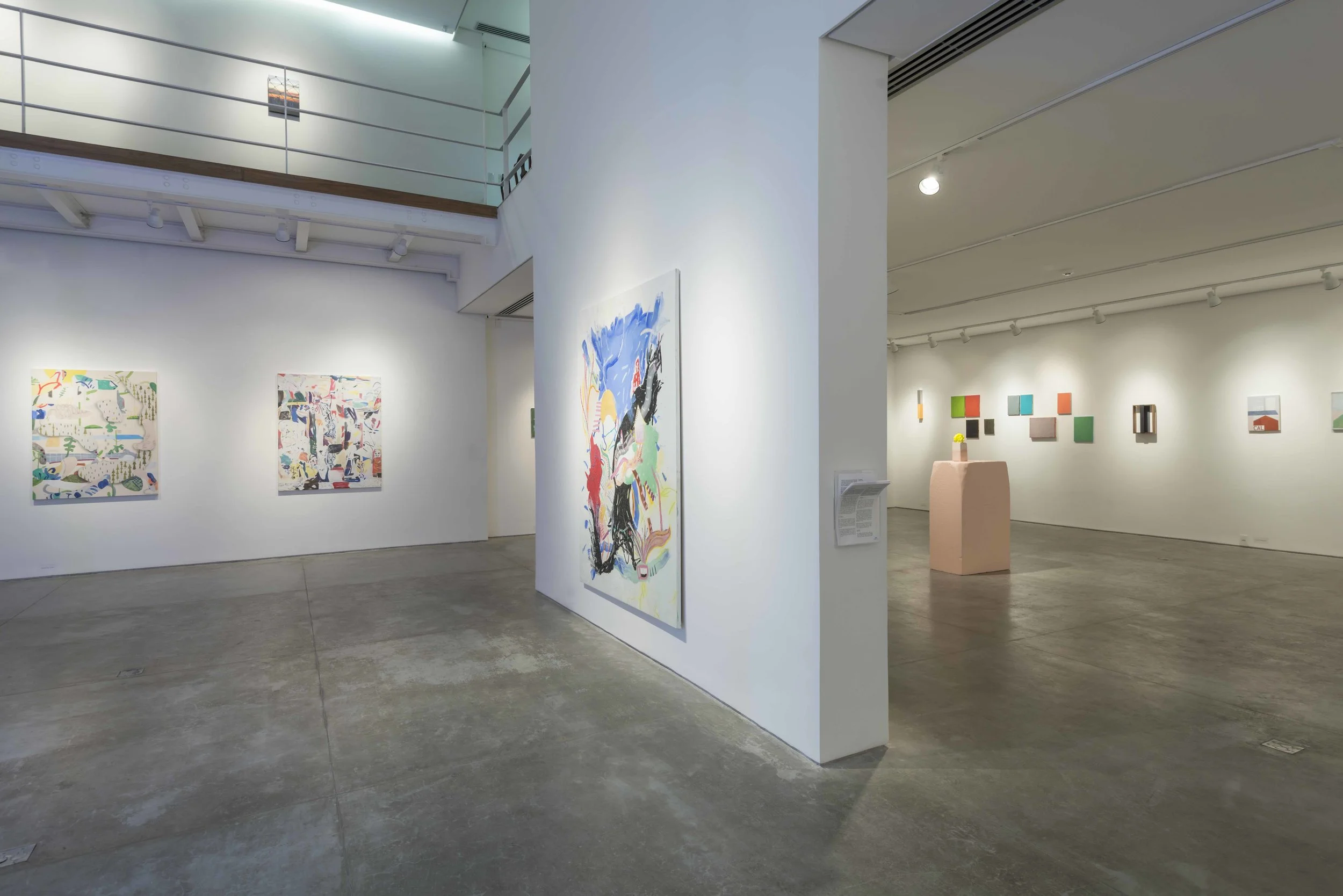Fragments of a pictorial discourse
Attesting the vigor of a visual language nowadays seems to be a task that borders anachronism. After all, in
multifaceted times, of aspired plurality and hyper-circulation in a variety of scopes, it would be natural that each
medium had its specificities clear and in sight without much effort. However, in the real and inflamed world, a
desired relationship between supports (to use a terminology that isn ́t much used today) in the present visuality
sometimes resembles a utopic data, other times seems almost improbable. However, we want to resist and go
against the common sense (which doesn’t cease to lie in wait for Arts, it’s worth pointing out).
Fragments of a pictorial discourse also affirms itself as a group exhibition that displays the works of 13 artists
of different generations, researches and approaches that is very much based on the attributes that each work
generates. And, gathered in this cutting, such works may provoke situations, links and relationships that formerly
weren’t so easily presented, now acquiring a new context, other surroundings and more perspectives and looks.
It should also be pointed out that the curatorship has been following attentively for some time the paths of Ana Elisa
Egreja, Antonio Lee, Cela Luz, David Magila, Eloá Carvalho, Fabio Flaks, Fabio Miguez, Felipe Góes, Giulia Bianchi,
João Gonçalves (João GG), Lara Viana, Ricardo van Steen and Sérgio Sister. And, yes, there are traces of affection,
familiarity and admiration in these choices, always loaded with subjectivity. A group exhibition also allows exchanges
that escape the market and the instantaneous, building nets, transformations and contaminations repeatedly fruitful.
An exhibition is certainly a witness of its time. Thus, a relevant personal data is that, even young, it was decisive
to follow in some way the celebrated generation 80, known as the one of painting, closely in its developments in
the following decade – a period that also rejected it with some strength – and, later, realize the dialogue that exists
between the veterans of those times and emerging artists of an extended field that became known as collective 2000
and Eight. “I claim an experimental statute for my work”, argued, with reason, Miguez, in face of some prejudice from institutional circles in relation to the pictorial, back in 2009.
Today, after innumerous follow-ups of artists throughout many regions of the country, panels, shows and similar
initiative, without mentioning the production that comes from the courses of visual arts (in Brazil and abroad),
it’s not fallacious to say that painting lives, and well, in our circuit. In face of the photographic, video, graphic,
performative, printed and the countless hybridisms between today’s developed media, painting – traditional, impure,
free, installational, wild, expanded, of immersive experiences, digital etc – keeps boasting its seductive doing, in
places so severe or chaotic like an artist’s atelier, in more disciplined or less lasting rhythms, in more ordained or
intuitive ways, among paintbrushes, color fields, light, pallets, pantones, pixels, hands and minds.










